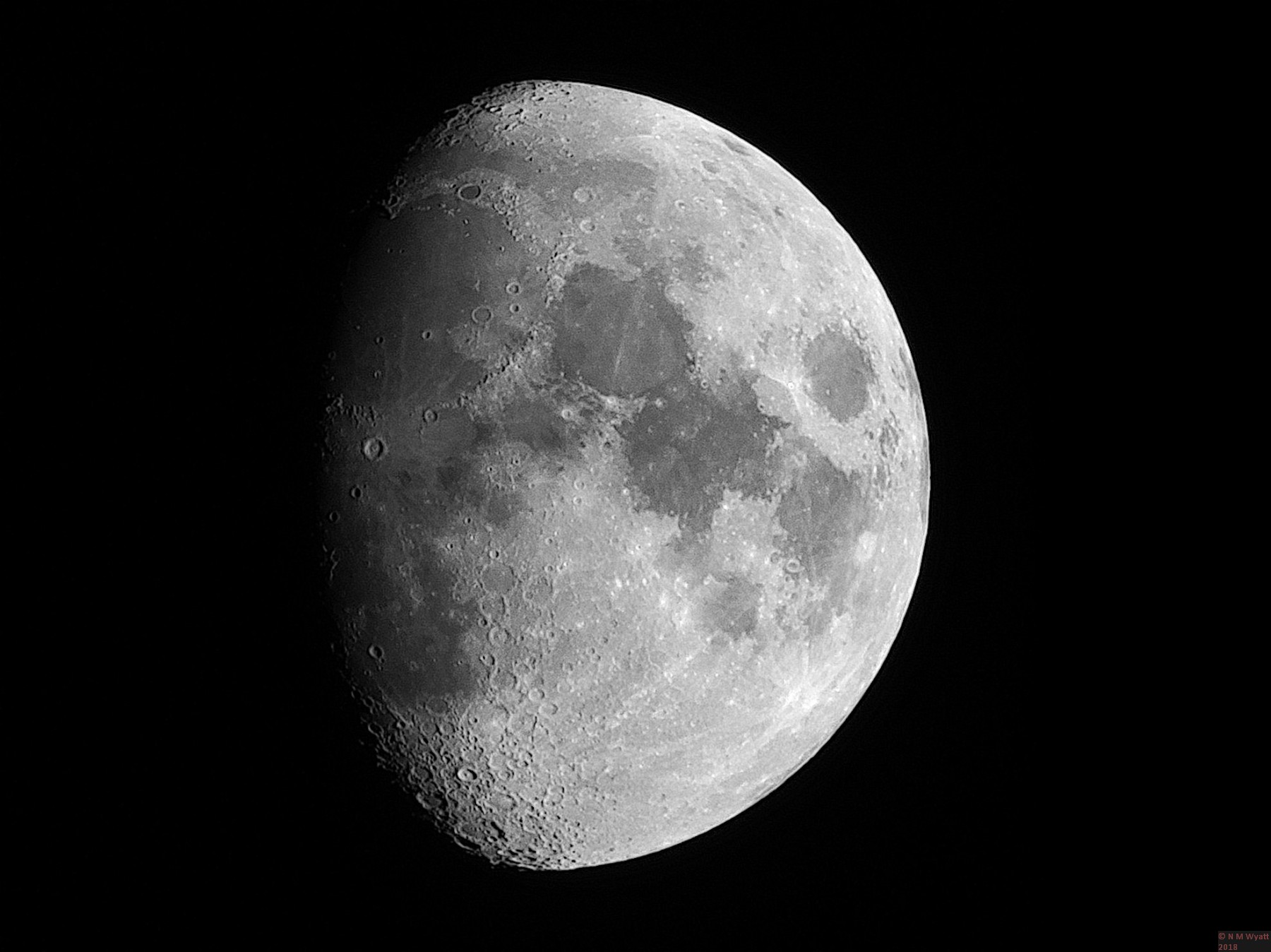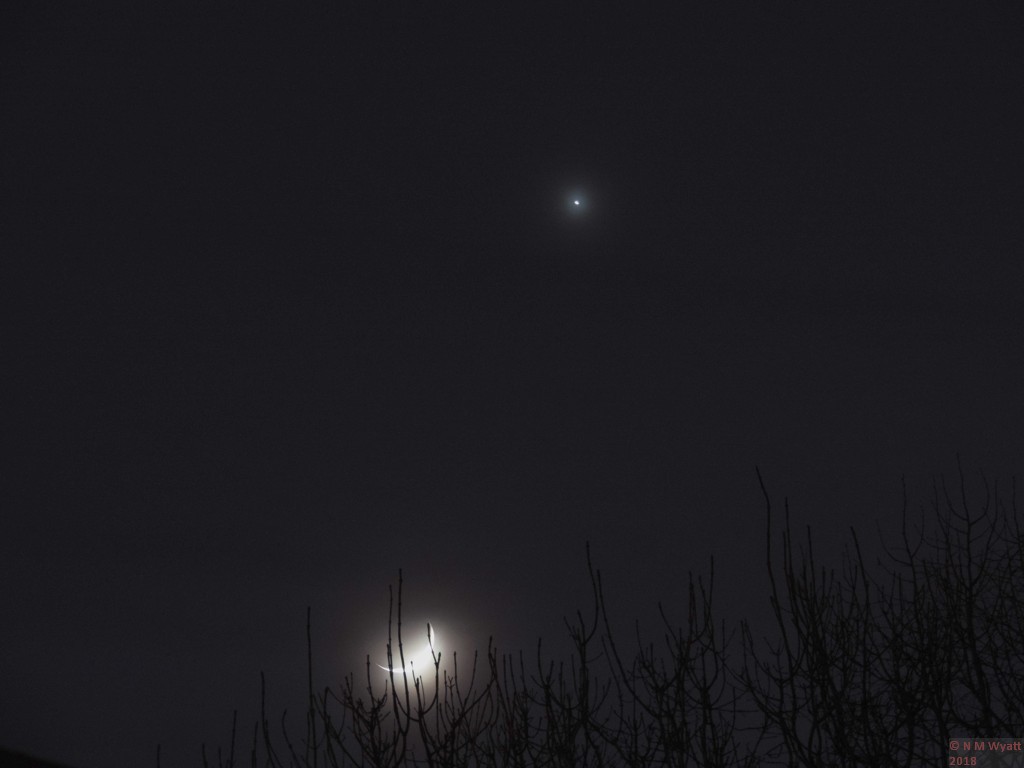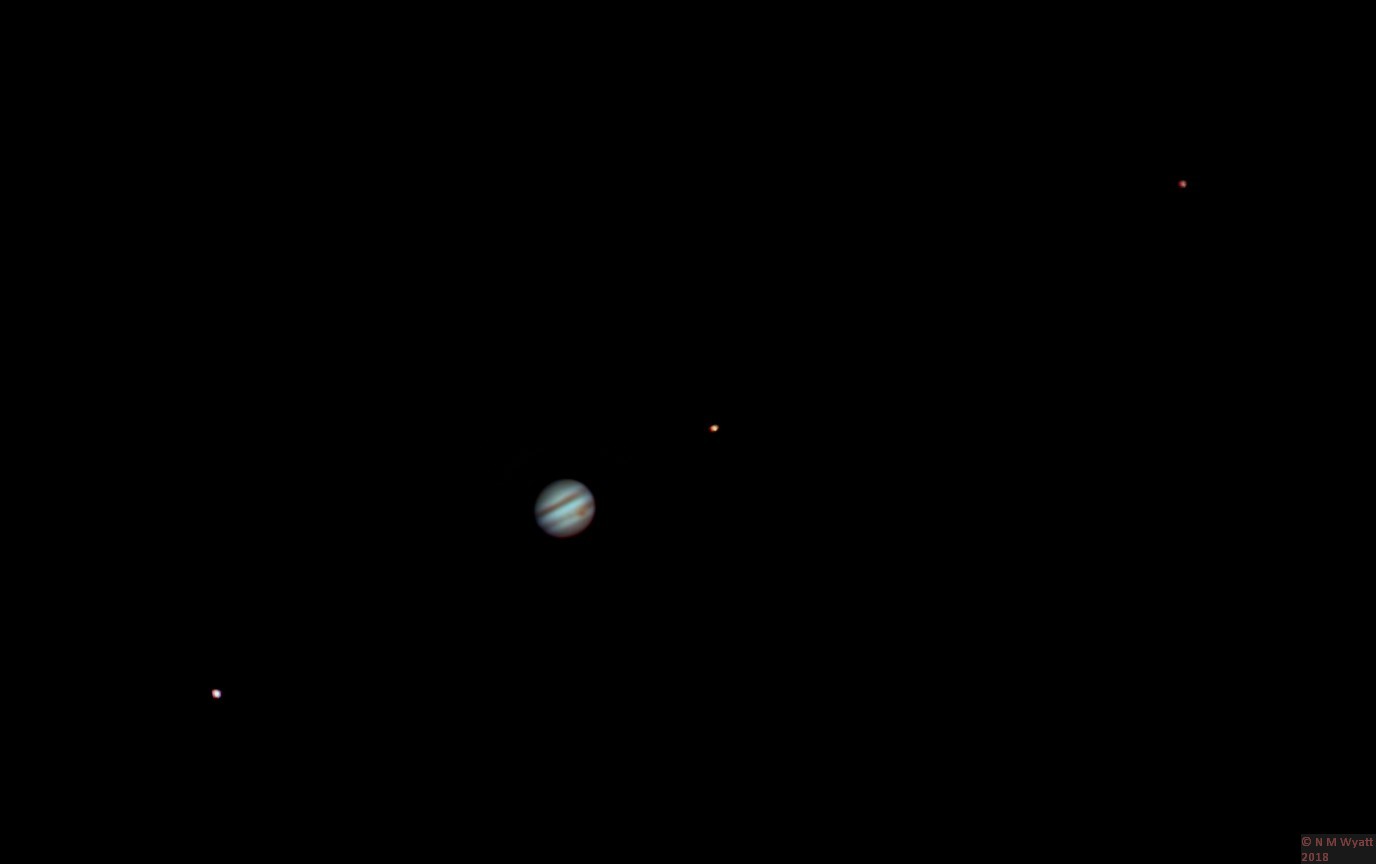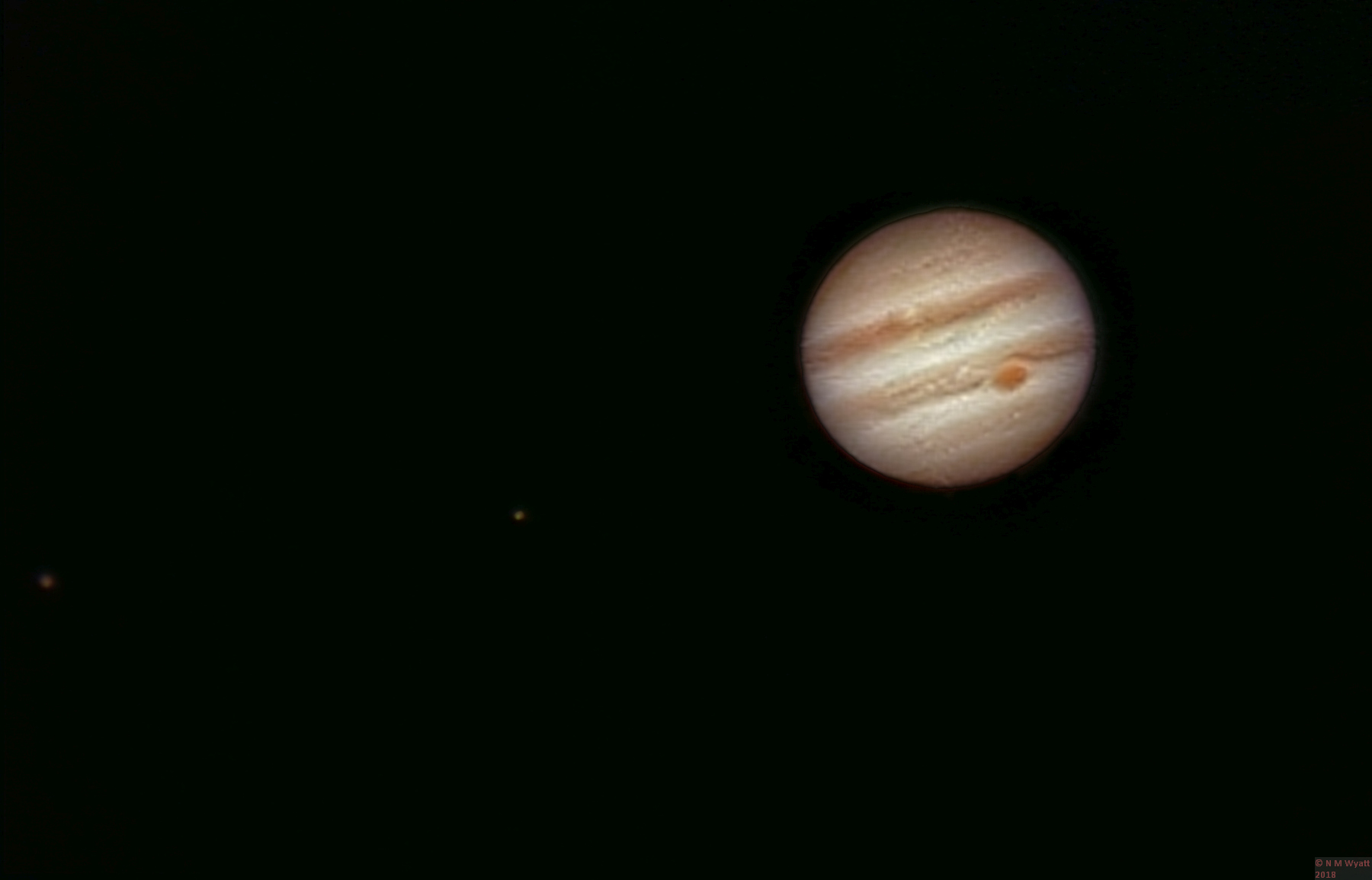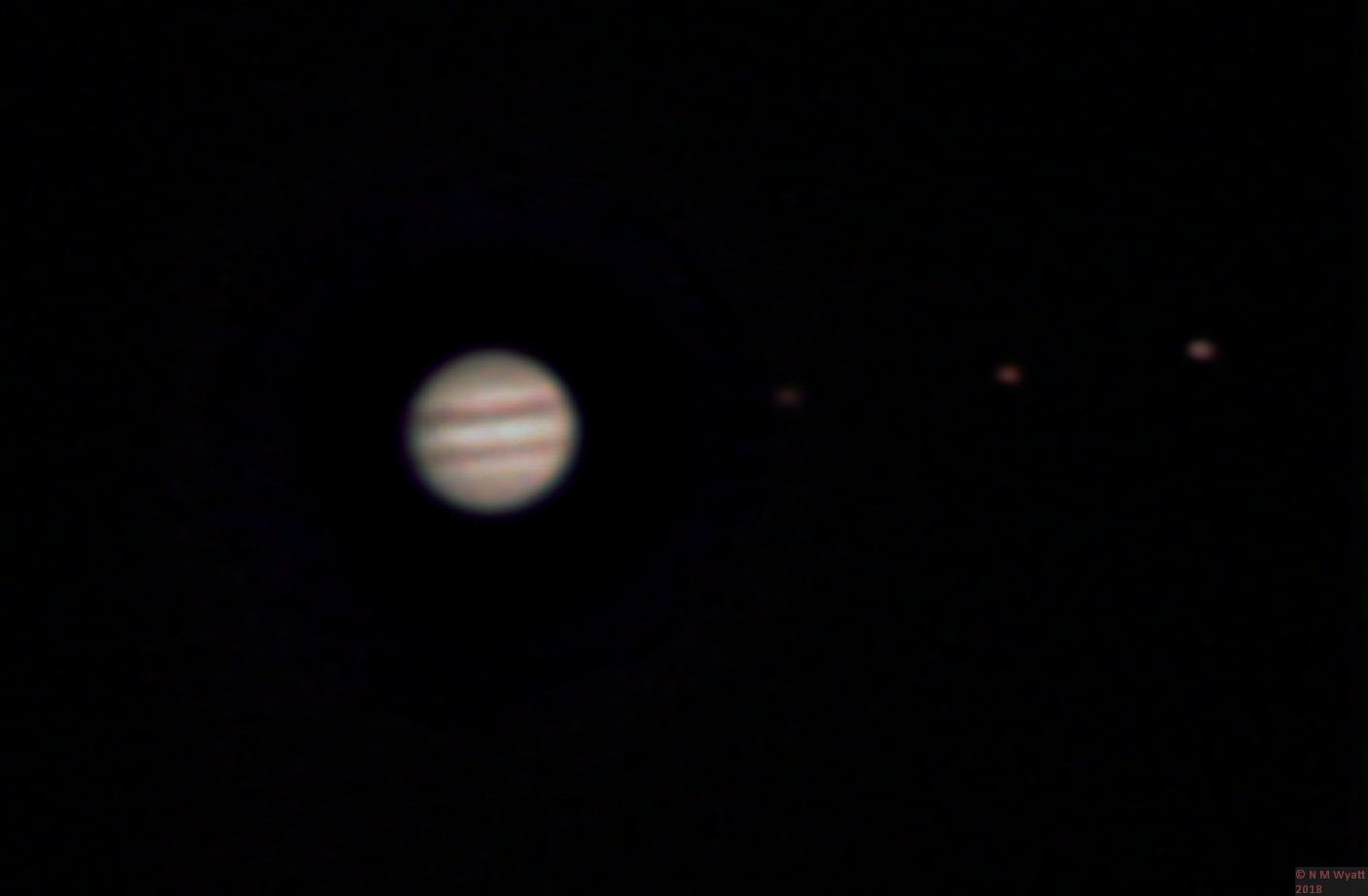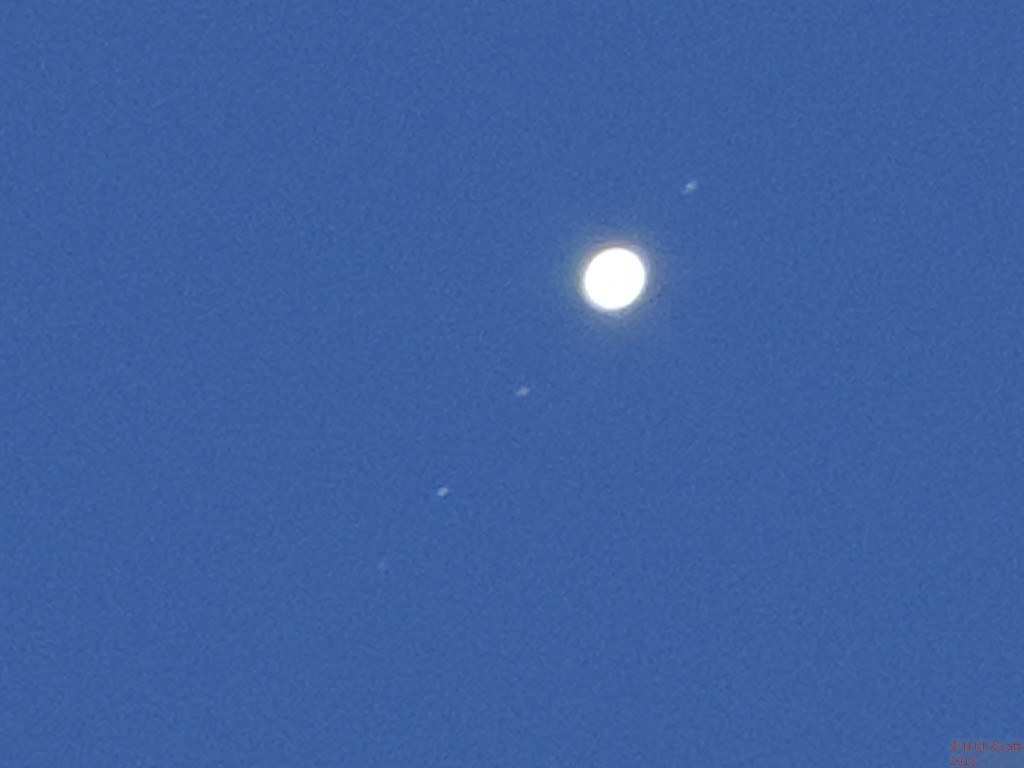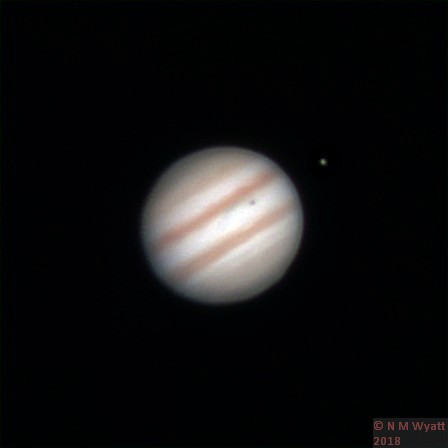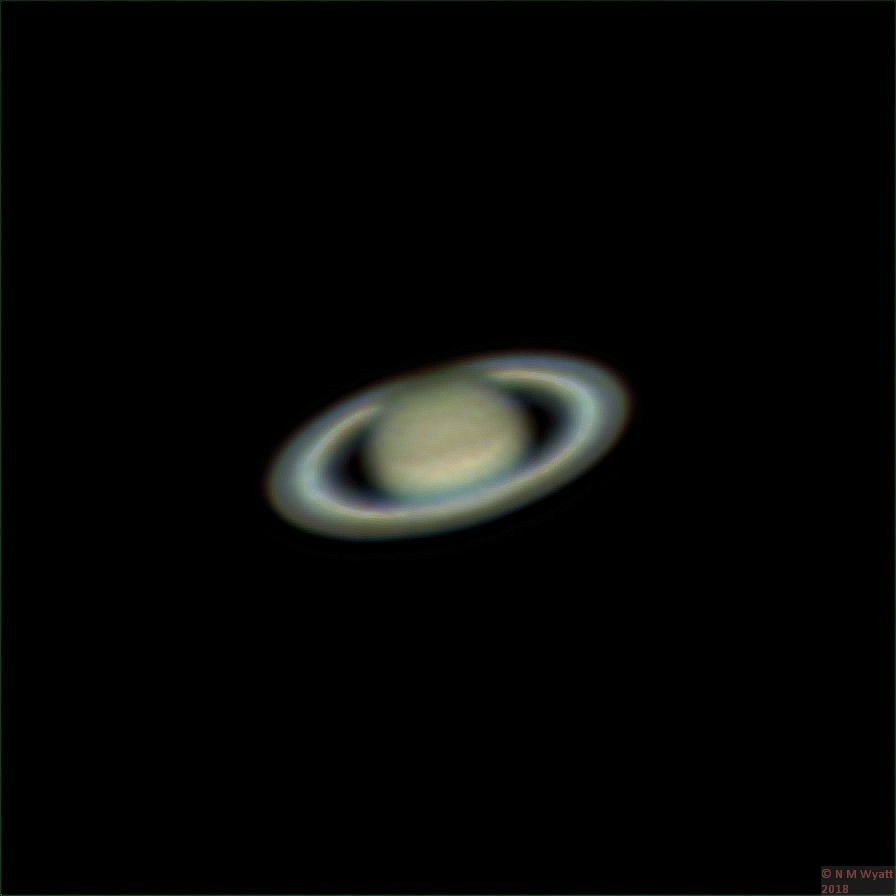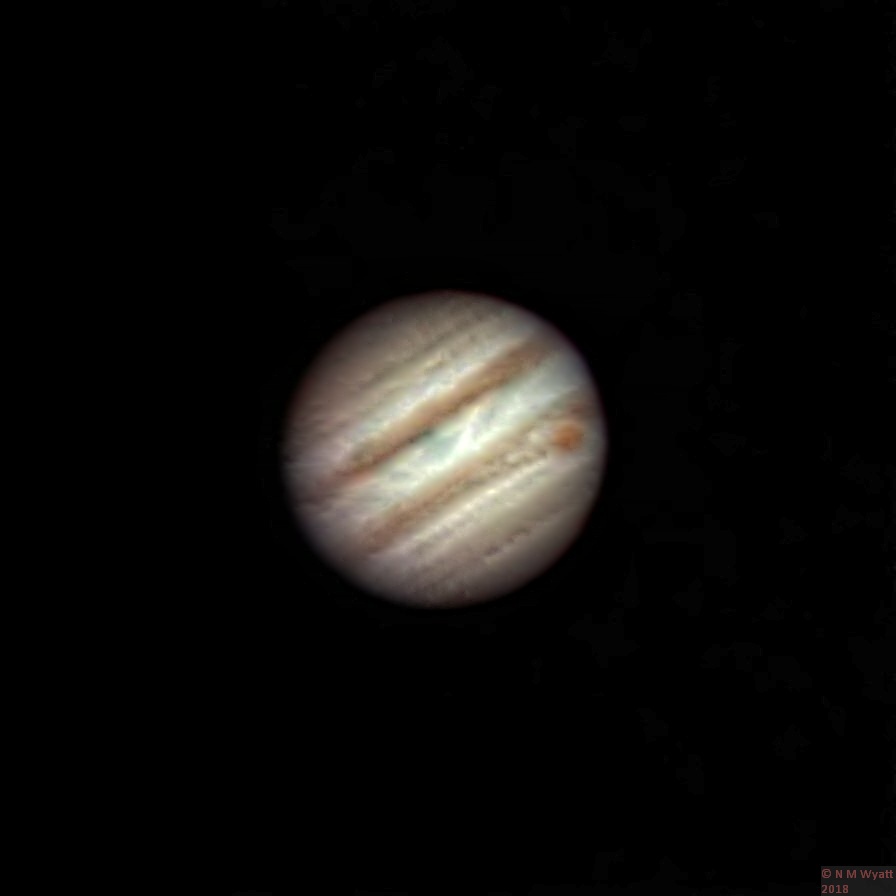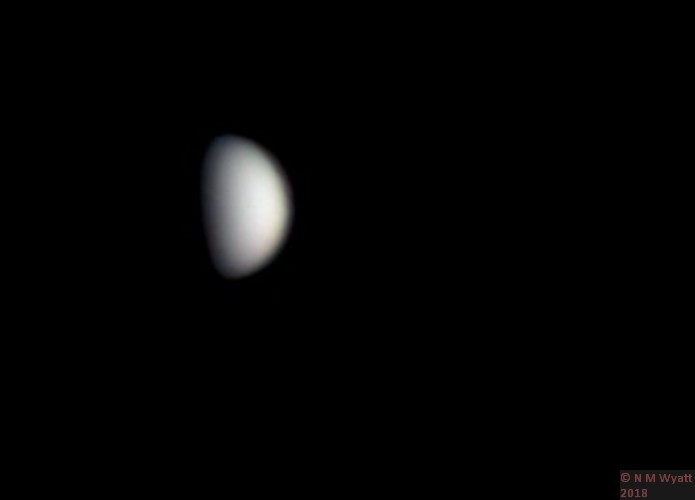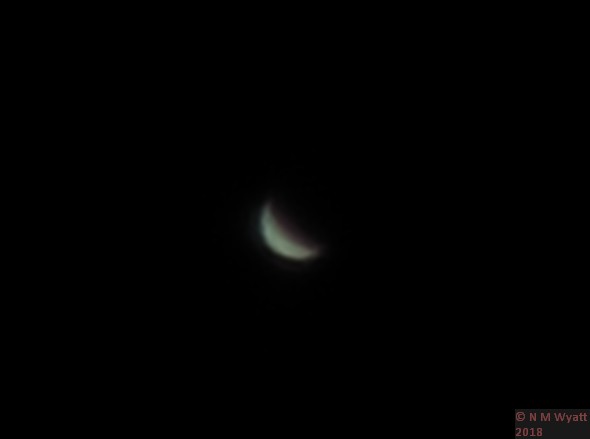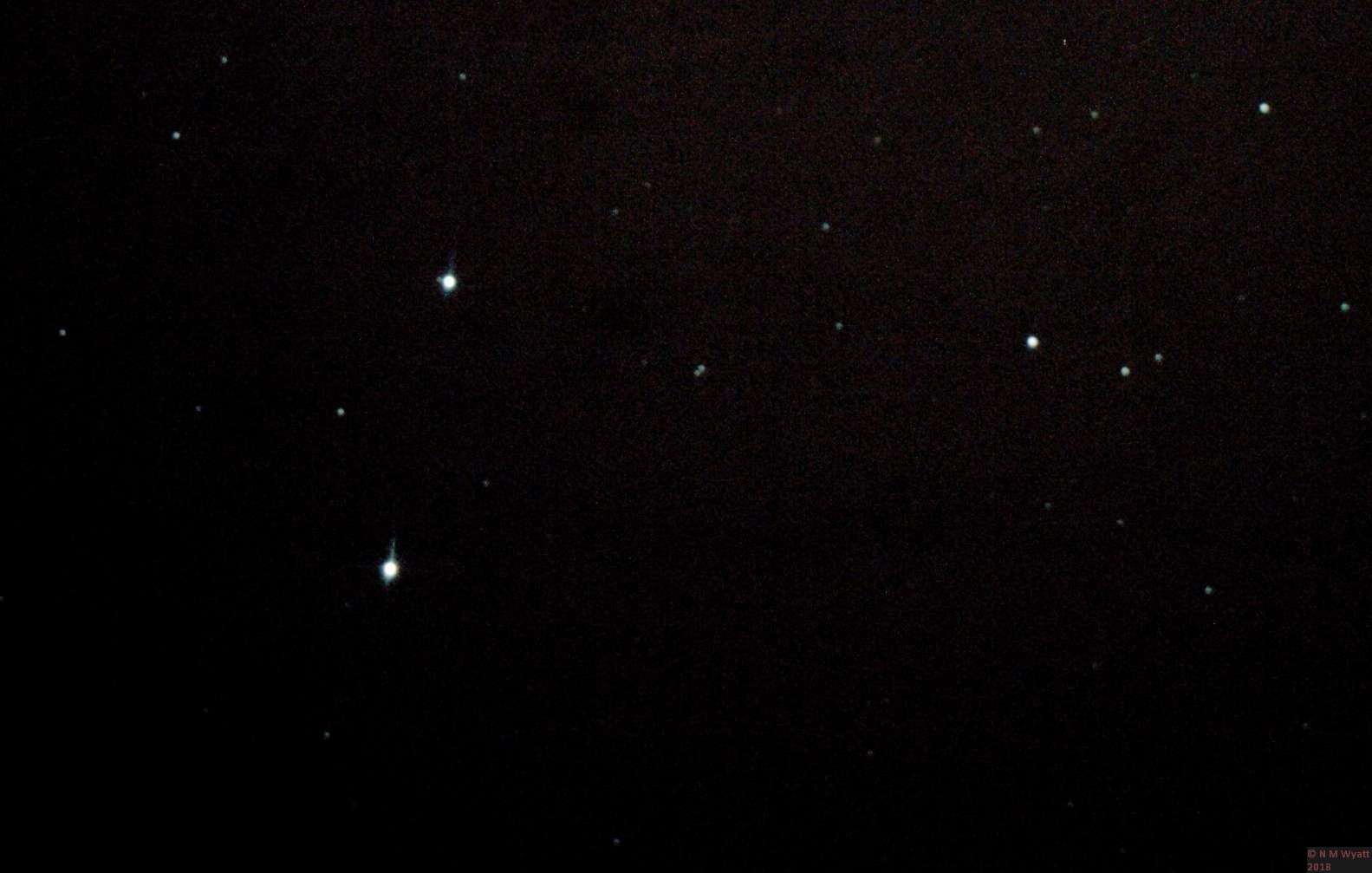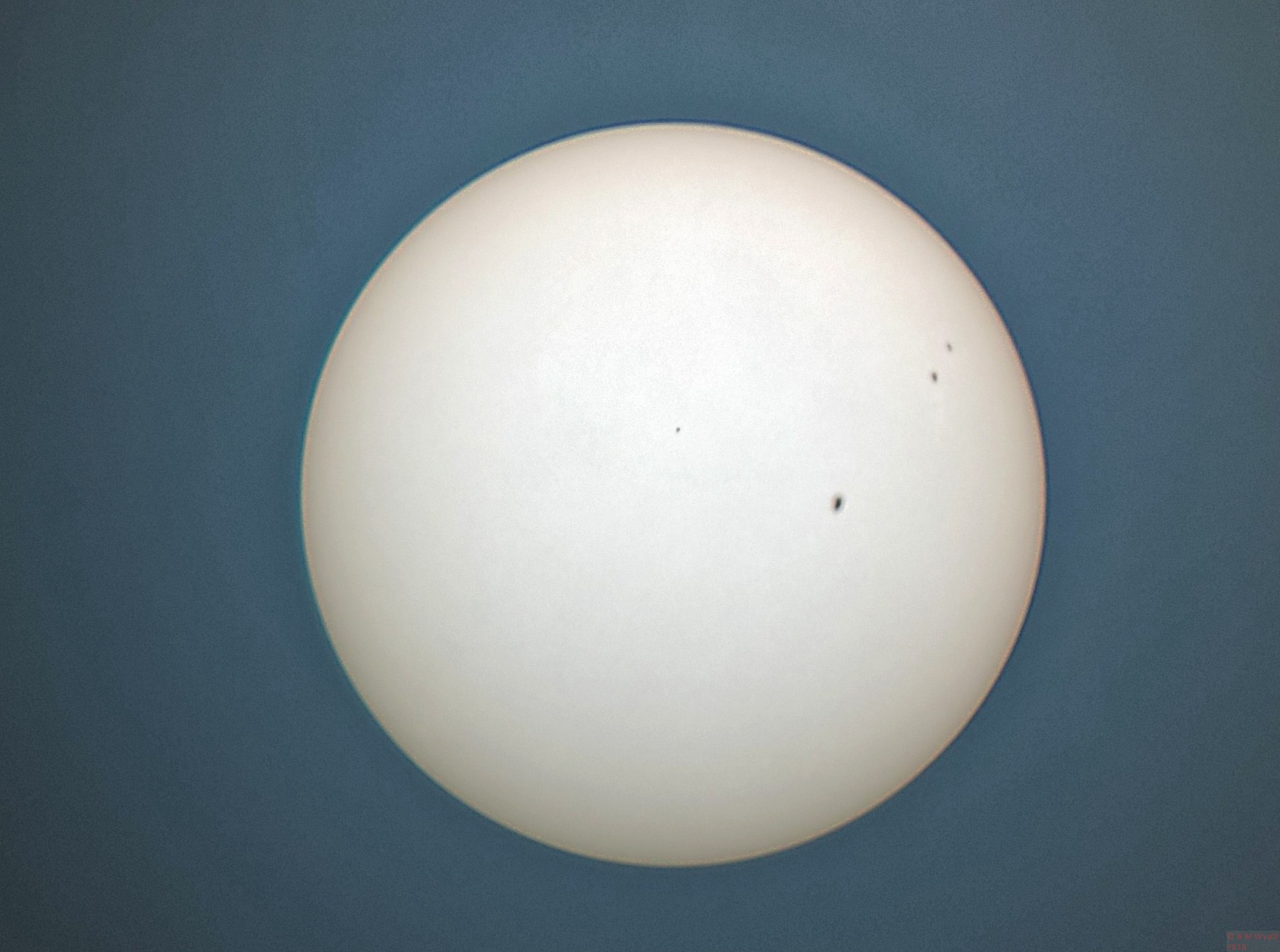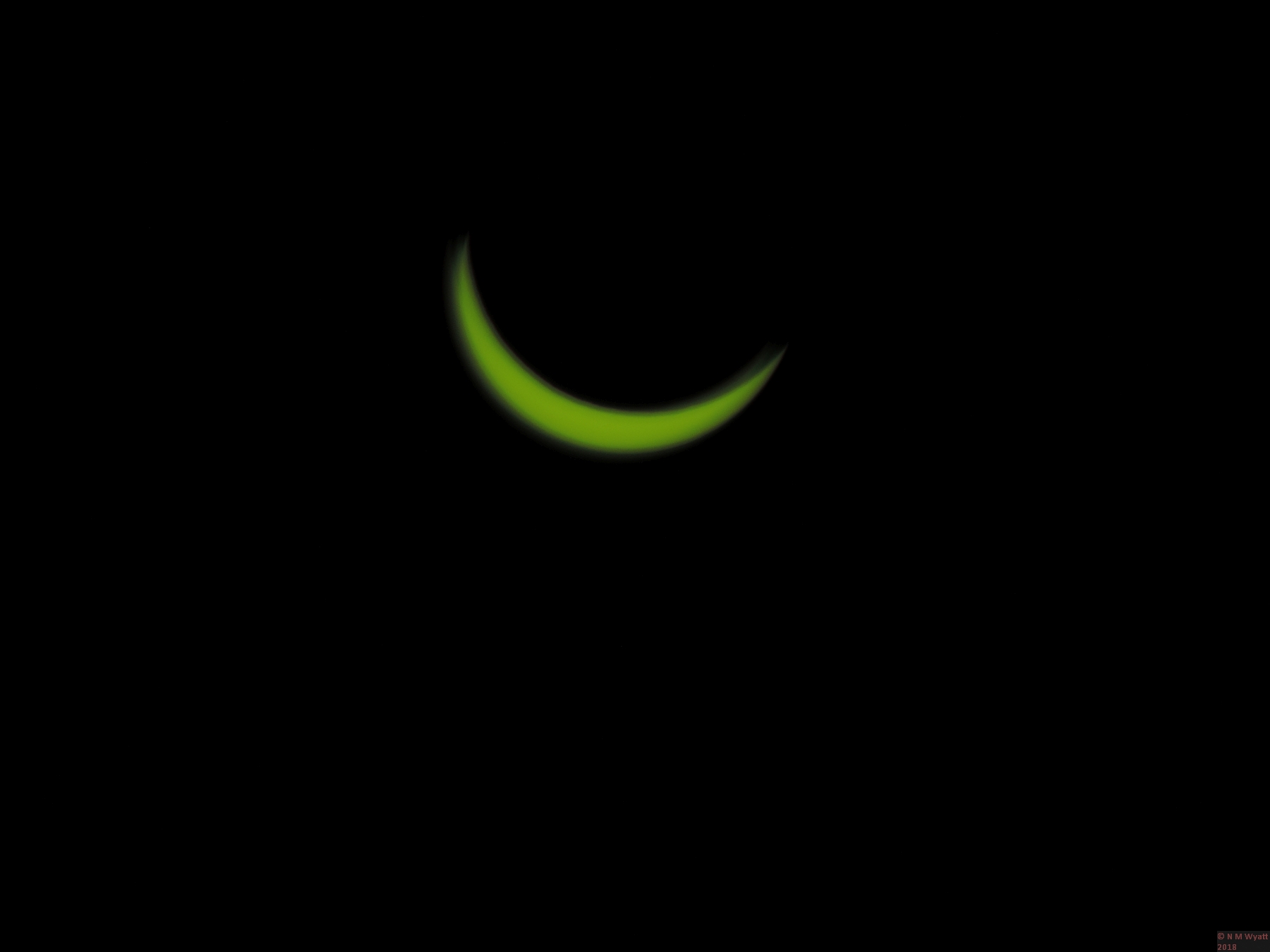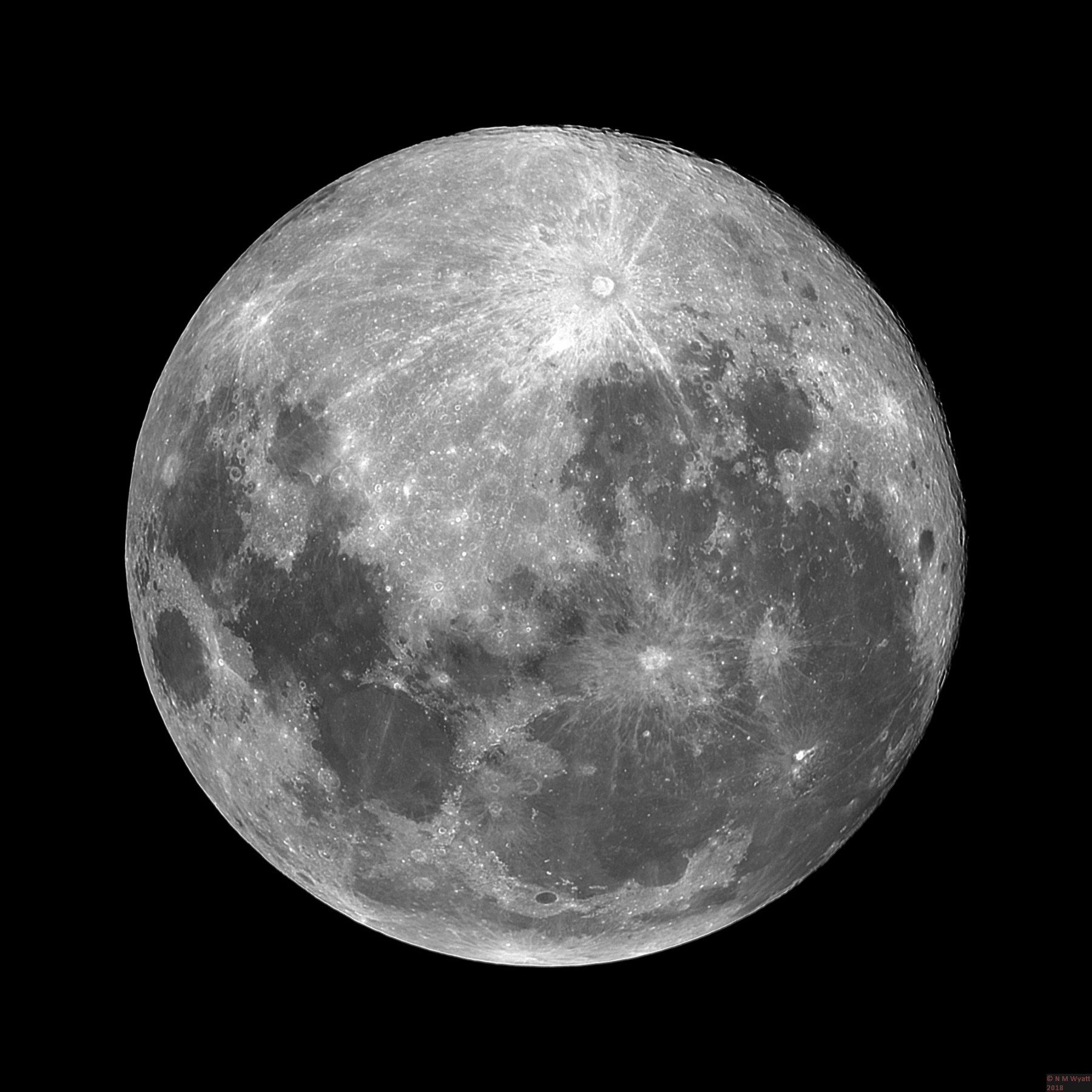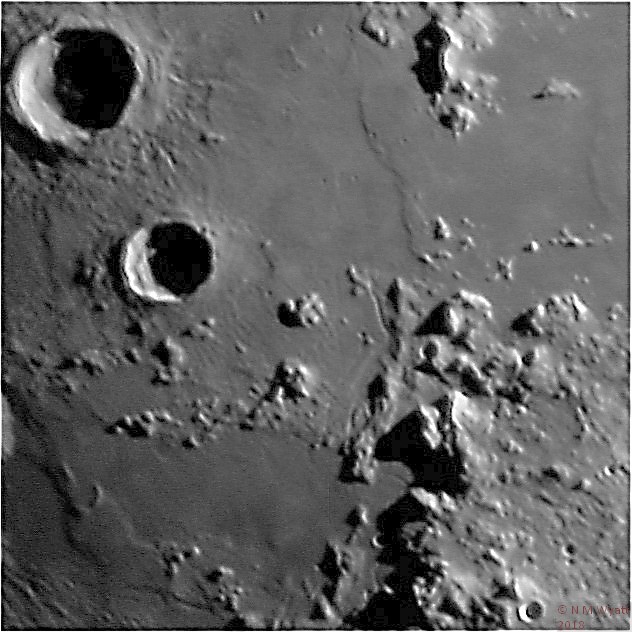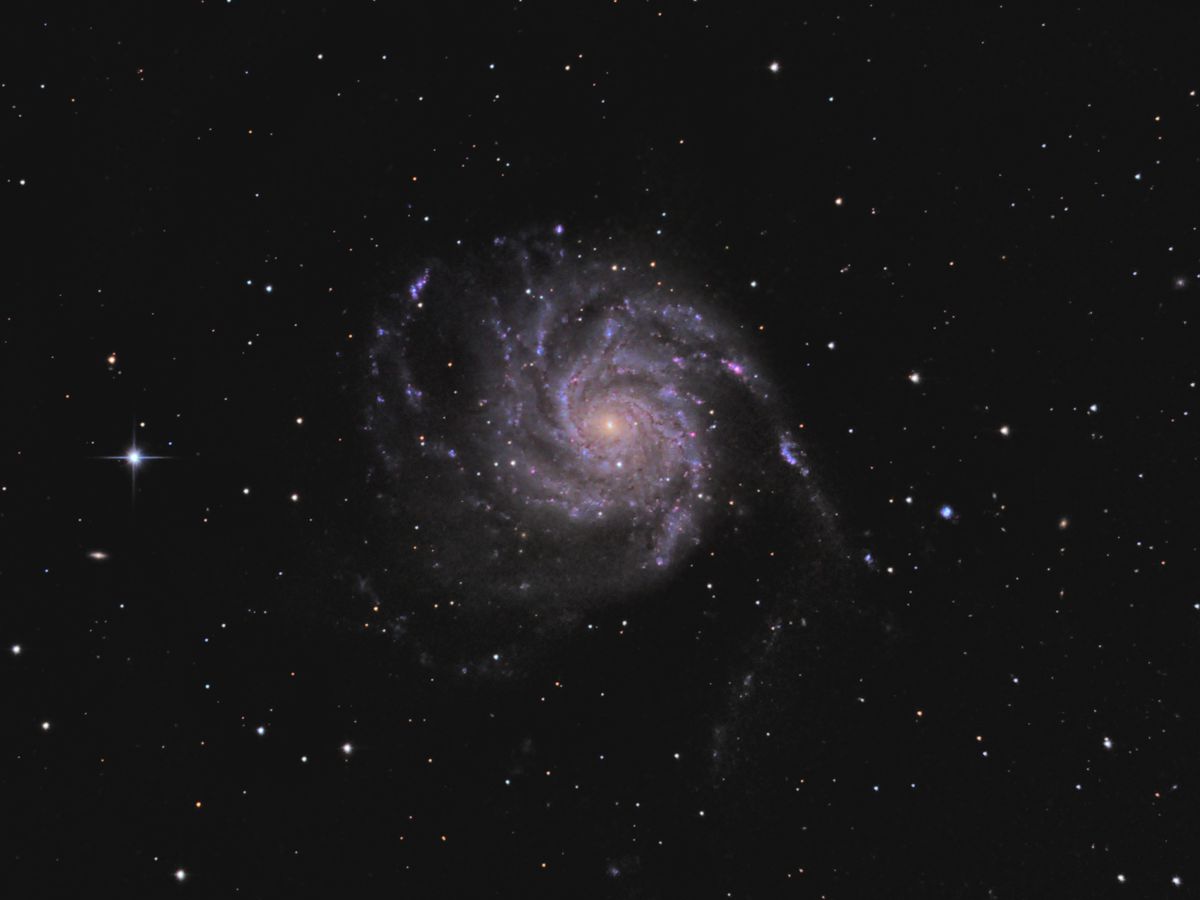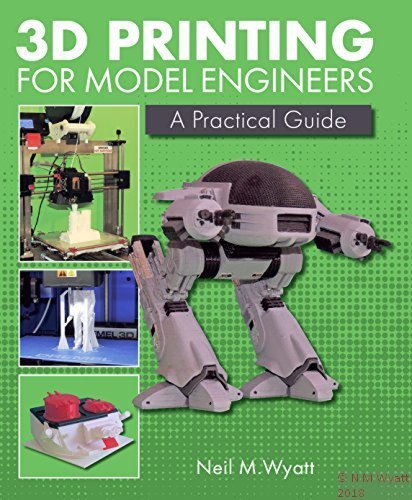If you find this website useful, please check out my books or visit my Amazon Author page. Or even Buy Me a Coffee!
Astronomy
Astrophotography
You are never too old to learn, and one of the thing that has opened my eyes has been discovering the quality of astronomical images that can be produced by amateurs with very modest equipment. By using digital cameras and image processing software it's a realistic ambition to produce images that compare favourably with those produced by the world's biggest telescopes fifty years ago - right in your back yard!
This website does not showcase the best astronomical pictures on the internet! It's a selection of pictures I have taken myself with basic equipment and free software. Producing images like these below, or even better ones, is within your reach!
Most importantly, you don't have to spend a fortune. My first serious scope, mount and tripod cost £180 on Ebay. I spent £40 on a more solid tripod, and about £200 on various bits and pieces including books and an ancient Canon EOS DSLR and a seconhand Microsoft HD Webcam. The results shown before are some of my best so far, and will be updated from time to time.
Perhaps the easiest target in the sky is the moon. You can get good pictures with any long or zoom lens, this is a 'stack' of six pictures taken with an ordinary bridge camera:
A gibbous moon photographed on the isle of Skye.
Follow the links below for introductions to some of the other things you can image in the night sky:
A Conjunction of Moon and Venus
To the Romans, Jove or Jupiter was the head of their pantheon of gods. It certainly dominates the night sky, sometimes being bright enough to see while the sky is still blue.
Galileo's Moons
When Galileo Galilee pointed a telescope at the sky and discovered the four largest moons of Jupiter, he helped prove Nikolai Copernicus' theory that the Earth was not the centre of the universe. Here we see (left to right) Ganymede, Jupiter, Callisto and Io. Europa is out of shot - probably behind Jupiter.
Jupiter with Ganymede and Io
This image, stacked from the best of three minutes worth of video taken with a Microsoft HD Lifecam Cinema shows what can be achieved with inexpensive kit. You can see how the moon Ganymede is significantly larger than Io. As well as the Great Red Spot there is a very large white storm on and several smaller white storms visible on the belts.
Jupiter and three of the Galilean Moons
Just to prove you don't need to spend a fortune to see or photograph Jupiter and its moons, this shot was taken using a £70 Bresser telescope from Lidl and a £25 webcam off Ebay. It isn't perfect, but gives you an idea what you can see or image with even a modest telescope. Some people have got pictures like this by holding a smart phone to the eyepiece of a telescope.
Jupiter and three moons through an inexpensive 70mm Bresser refractor
And who needs a telescope anyway? This picture shows Jupiter and the four Galilean moons before the sky has even gone fully dark - taken with a Nikon P520 bridge camera, admittedly one with a 42x zoom, but not bad, eh?
Jupiter and four moons in a blue sky
With patience and the help of online calculators which tell you where the moons of jupiter are, it's possible to get images like this, showing the moon Io and its shadow on Jupiter. When you see images like this, you start to get a feel for the planets as huge three-dimensional objects rather than just bright dots in the sky.
Jupiter and the moon Io, casting its shadow on the gas giant.
- Details
- Category: Astrophotography
The planets known the the ancients were Mercury, Venus, Mars, Jupiter and Saturn. Even a relatively modest telescope will bring these, Neptune and Uranus, and the moons of Jupiter and Saturn into your reach. A slightly larger scope can even be used to image Pluto or asteroids like Ceres and Vesta.
So, ignoring the fact that poor old Pluto got demoted to 'dwarf planet' status, there are eight planets we can photograph (plus earth, if you point your camera straight down!) This is my collection...
Triplanetary
Lets start with a composite shot, I'm particularly proud of this because Saturn and Mars were very low, less than 16 degrees above the horizon.
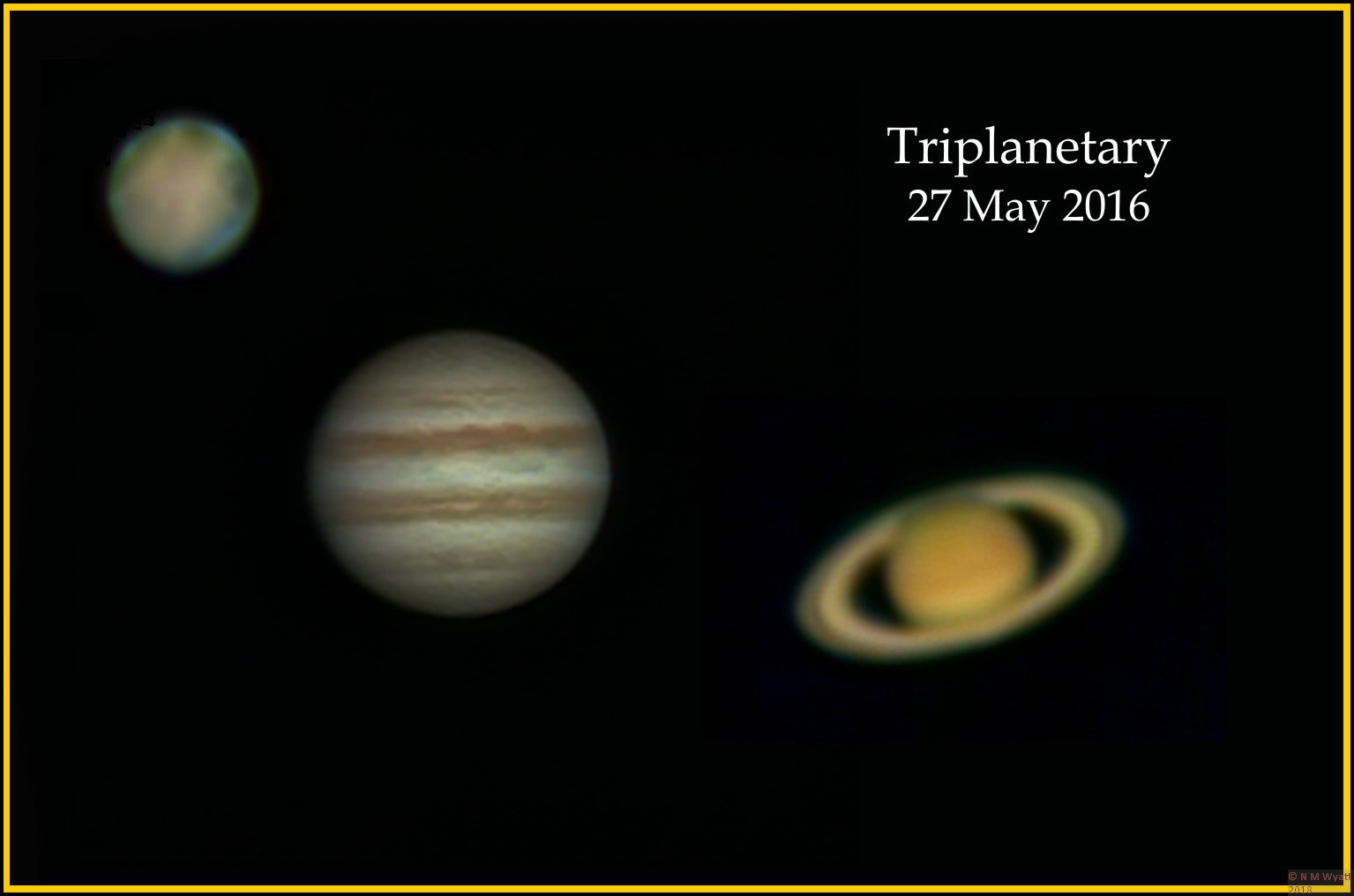
Saturn
Of all the sights in the sky, nothing is quite as big a surprise the first time you see it as Saturn and its rings. It really is like a shining jewel in the sky. The Voyager space probes discovered that the dull grey patch on 'top' is a hexagonal pattern of storms. Advances in imaging techniques mean that some amateurs have been able to image these storms!
Saturn, an image made by stacking the best of several minutes of video telescope footage.
Jupiter
Jupiter and its Red Spot. The spot is a storm bigger than the Earth, but many other swirling storms rage in the various coloured bands that race around this gas-giant. This image was taken with a cheap webcam fitted to the telescope in place of an eyepiece. An excellent program, Sharpcap, was used to capture the video.
Jupiter showing the red spot and cloud bands
More images of Jupiter and its moons
Mars
Much closer than jupiter, but also much smaller, Mars is a challenging target except when it is at its closest to Earth. This is the best I could do with a bridge camera and much stacking! It does show a bit of surface detail. Better things were in store for 2016!
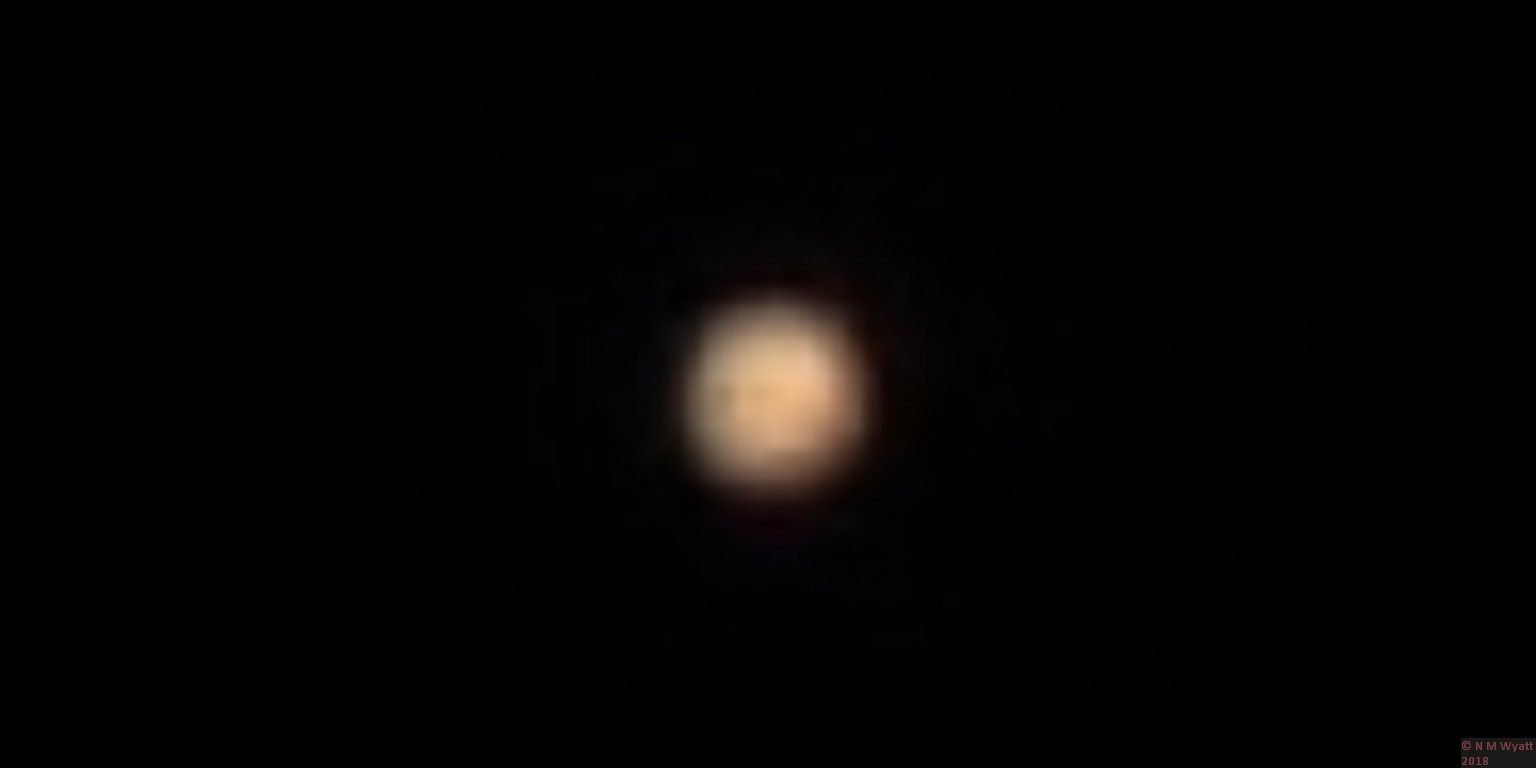
Mars, without much detail.
The clsoets approach of Mars in 2016 is in late May. This photo was taken in early may using Sharpcap and processed in registax. The evry low angle of the planet above the horizon made processing very hard.
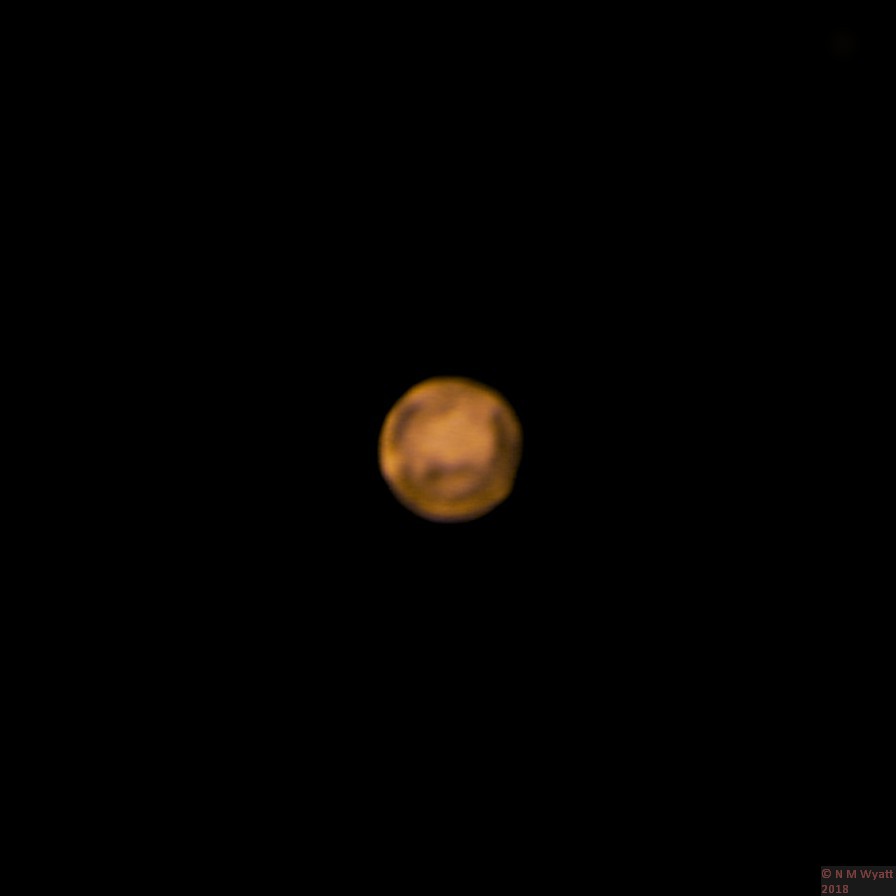
Mars in 2016 showing much more detail. Muse fans will recognise the dark patch at upper left as Cydonia.
Mercury
Mercury is a challenge to image, small, bright but very close to the sun which means it is rarely seen in a truly dark sky. So far I have only got it as a few faint pixels, aside from this image of it passing in froint of the sun.
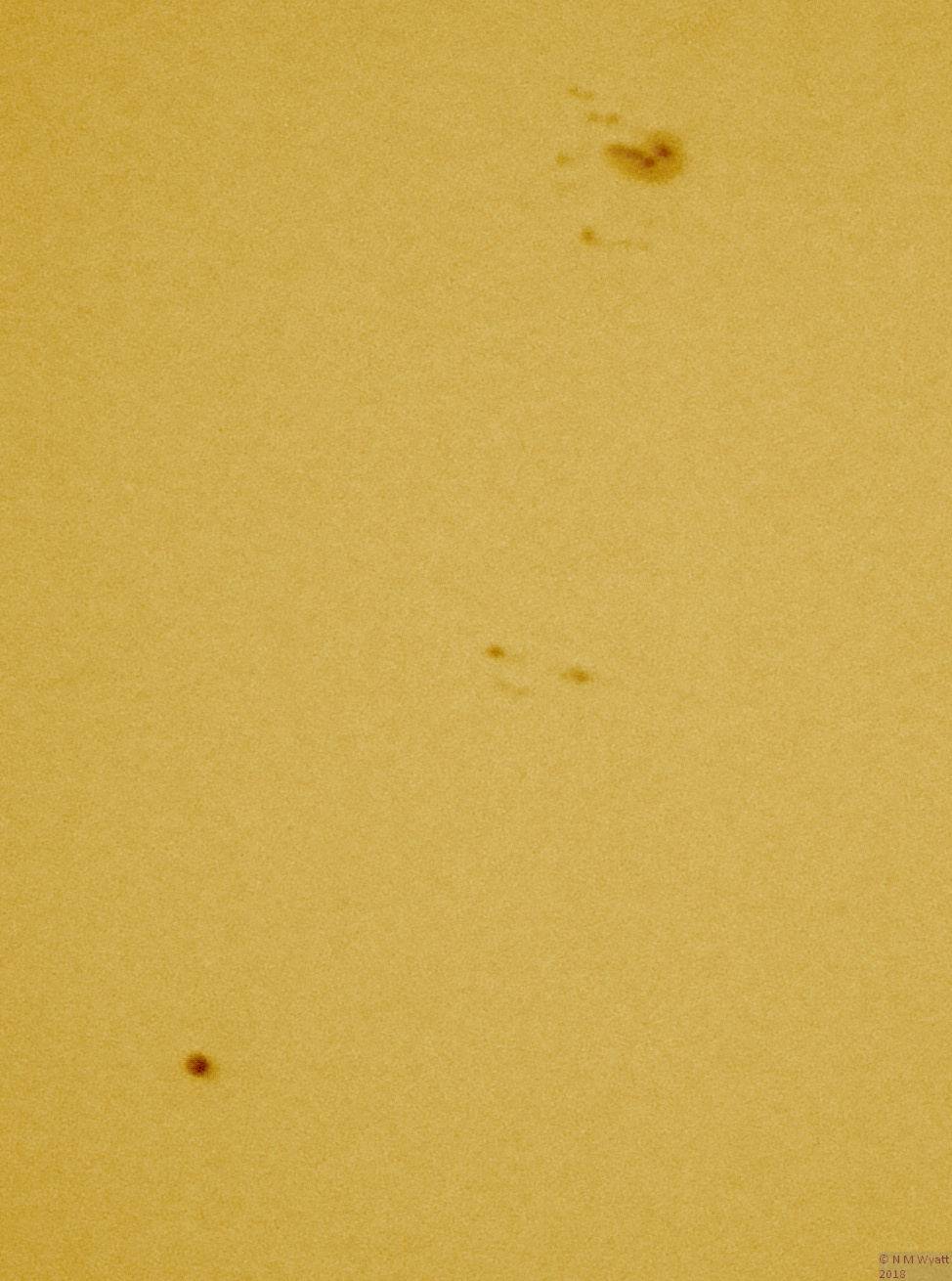
Mercury passing in front of the sun, the patches higher up are sunspots.
Venus
Venus is the second planet from the sun - but without its runaway greenhouse effect, it might have been a planet with much more in common with Earth. Its bright dense clouds make it easy to find, but a challenge to image. Others have had more success in capturing detail in the clouds than I have by using ultra-violet filters.
The hard part of imaging Venus is it is so bright!
As Venus is so bright, but lacks detail, it can be a rewarding subject for modest cameras. Take 37 pictures from a bridge camera, align them in PIPP, stack in Autostakkert!2 with x3 drizzle, and apply maximum entropy deconvolution in Astra, finally increase the saturation slightly in an image editor.
This image of Venus is a stack of 37 frames taken with a bridge camera
Uranus
Uranus is twenty times as far from the Sun as the Earth is, and is four times the diameter of Earth. In good conditions it is apparently possible to see it with the unaided eye, I certainly had no trouble seeing it through my finder scope so it was easier to 'catch' than Neptune. This is a stack of 47 images taken using an x2 barlow on my Skywatcher 150PL for an effective focal length of 2400mm. In infra-red light Uranus shows banding like Jupiter and Saturn, but in visible light it is a plain disk, even Voyager 2 could not discern any more detail than this in visible light!
Uranus shows little surface detail in visible light
Neptune
I'm thrilled to add Neptune to the tally, the eight planet from the sun and the farthest out if you don't count Pluto. In the eyepiece it was just a tiny blue dot. It's the one at the 'right angle' of the triangle of brighter stars in this shot. Look very closely and you should just be able to see its largest moon, Triton to the left of and almost 'touching' the planet.
Neptune and Triton close to the relatively faint stars HD214686 and HD214595 in Aquarius
Uranus and Mercury coming soon, I hope!
- Details
- Category: Astrophotography
I'm cautious about including the sun - too many people have blinded themselves looking at the sun through telescopes or even camera viewfinders.
If you want to know how to view or photograph the sun, there are safe ways to do it (some cheap, some very expensive but giving amazing results). The easiest way is projecting its image onto a sheet of paper or a screen.
Sunspots on the face of the sun
One other way, however, is to wait for a very foggy day when the fog is extremely even and thick. Sometime after sunrise it will be impossible to see the sun, but at some point you will probably see the sun as a faint disc. You must NOT look at the sun through a telescope in such conditions, but it is possible to photograph it with a digital camera using high shutter speeds. This picture is a stack of 25 full-frame shots and shows several spots. This is effectively in natural colour, although the image has been 'histogram stretched. There's another great bunch of sunspots HERE.
Sunspot groups AR2415, AR2418 (the big one) and AR2419 (the small one), on 20 September 2015
I have never seen a total eclipse of the sun, but I have seen a few partial eclipses. It's essential to use special viewing glasses, but if you do you can expect to see views like this.
The near-total eclipse of the sun in 2015.
- Details
- Category: Astrophotography
Our closest companion in space, the moon, is the easiest astronomical object to observe or image. Any digital camera with a reasonable zoom can give good results.
The moon, a day before full. At this stage very little crater detail is visible, except at top right (the image is inverted), but the 'rays' of ejected material from some of the huge impacts are particularly clear. Right click and 'view image' to see more detail.
The full moon, imaged through a 6-inch telescope
The above photo is a stack of 21 photographs taken using a 6" telescope. PIPP was used to pre-process the image, which was stacked in Autostakkert!2, tweaked in Corel Paint (any basic imaging programme would do, many use GIMP), and sharpened in Astra Image.
Naturally a telescope does let you get more small detail, though. The curving groove near the bottom centre of this pictuire is Hadley Rille - those of my generation will recognise the name as the landing site of the Apollo 15 ilunar mission. The landing site is about 1/4 of the way up and just right of centre. Stacked from about a minute of webcam video, captured with Sharpcap and -sharpened with Registax.
The Apollo 15 landing site near Hadley Rille
- Details
- Category: Astrophotography
Charles Messier (1730-1817) was a French astronomer who had an obsession with comets. Getting fed up with 'discovering' fuzzy blobs that turned out to be distractions, he made a catalogue of things to avoid in the night sky. His assistant and friendly rival Pierre Mechain assisted him in this task, and eventually he came up with a list of 103. Later astronomers added another 7 he listed (although number 102 was arguably 'bogus') and he was also aware of M110. So, 109 'Messier Objects' numbered 1-110, got it? Do keep up at the back...
Well that's almost ten times as many objects as comets, and the irony is that Messier's comets faded back into the obscurity of the outer solar system, while his list is a favourite guide to many of the best sights in the night sky!
The list includes several types of object, mostly globular clusters, open clusters, planetary nebulae and galaxies. Most are telescopic objects, but several can be seen with the naked eye, especially from 'dark sky' sites.
the first Messier Object I photographed was the Hercules Cluster - M13, a massive ball of stars, within our galaxy and bound together by gravity, just visible to the naked eye. My favourite image so far is the Pinwheel Galaxy, M101, because although it is big it is faint and real challenge to image well.
M101, also known as the Pinwheel Galaxy
My ambition is to photograph and observe as many of the objects as I can - and each time I 'tick off' another object I will post its image up here.
The numbers below link to a page for each Messier object, they range from missing, through poor to images I am very proud of. Some smaller globular clusters and most open clusters (typically among the lower numbers) tend to make less spectatcular images although they often look great through a scope! My favourites are the galaxies!
M1, M2, M3, M4, M5, M6, M7, M8, M9, M10
M11, M12, M13, M14, M15, M16, M17, M18, M19, M20
M21, M22, M23, M24, M25, M26, M27, M28, M29, M30
M31, M32, M33, M34, M35, M36, M37, M38, M39, M40
M41, M42, M43, M44, M45, M46, M47, M48, M49, M50
M51, M52, M53, M54, M55, M56, M57, M58, M59, M60
M61, M62, M63, M64, M65, M66, M67, M68, M69, M70
M71, M72, M73, M74, M75, M76, M77, M78, M79, M80
M81, M82, M83, M84, M85, M86, M87, M88, M89, M90
M91, M92, M93, M94, M95, M96, M97, M98, M99, M100
M101, M102, M103, M104, M105, M106, M107, M108, M109, M110
- Details
- Category: Astrophotography
Page 23 of 23

